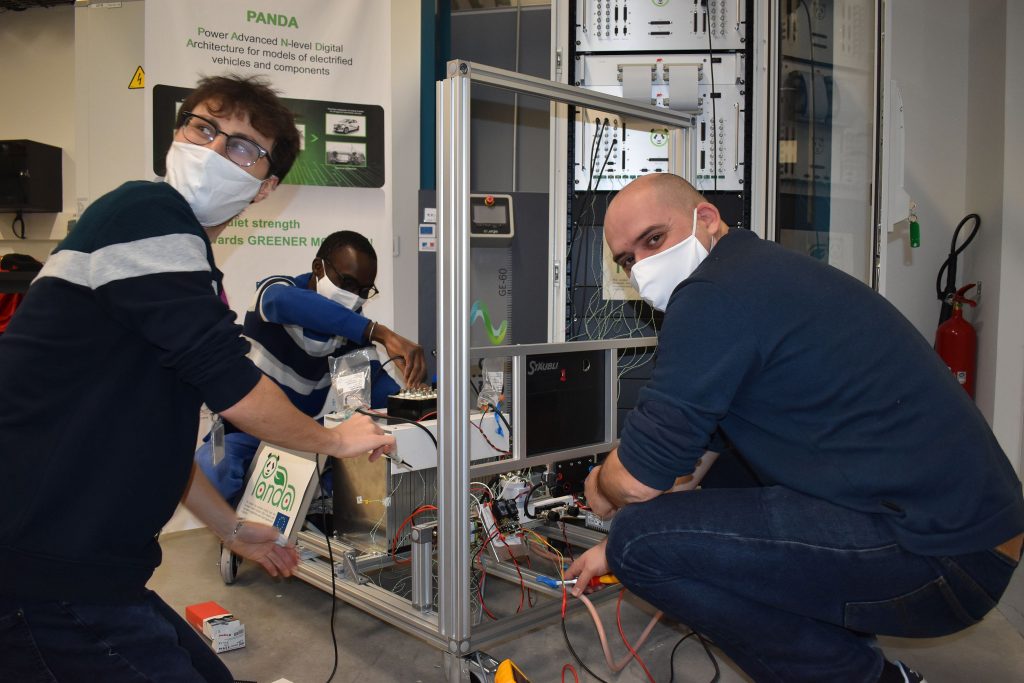Interview with ULille
“We have a success,” says Dr. Ronan German, scientist at the Université de Lille. “If I want to test 10 different batteries for one car, I can do that very easily now.” The partners in PANDA are developing a method to seamlessly integrate virtual models of electric vehicles and their components. “What we want to do in PANDA is to gain time. And it works!”
German shows the setup. “It is really simple. Here I have a real battery pack, designed specifically for PANDA. In the Siemens cloud we download the complete vehicle models. I can select a vehicle, for instance a Renault Zoe, and download the model onto our Typhoon HiL setup. I connect the battery to the HiL setup through the power interface and select a drive cycle, e.g. WLTC class 3. And that’s it, everything is ready to start testing.”
Normally in industry batteries are tested by running multiple current cycles, and measuring the voltage. “We do it differently,” German says. “In real life you want to drive at a certain speed. That is essentially a request for power. Therefore, our HiL device forces the power on the tested battery. The constraints on the battery are more realistic, as it would happen in the real vehicle.”
Prior in the project, Siemens has integrated the PANDA approach in Simcenter Amesim, based on the energetic macroscopic representation (EMR) method. Typhoon HiL has built the setups for the hardware-in-the-loop tests, and Bluways has delivered the battery pack. Under the supervision of Alain Bouscayrol, German has been working with his colleagues Florian Tournez,Anatole Desreveaux, Olivier Ferla and Alla Ndiaye to prepare the tests in Lille.
“The big advantage is that we can test our battery without having to build a complete vehicle. Moreover, the PANDA approach is flexible . You can come in with any battery to test, vehicle model or driving cycle and we can get a result within hours. It will be very interesting for a battery manufacturer.”
